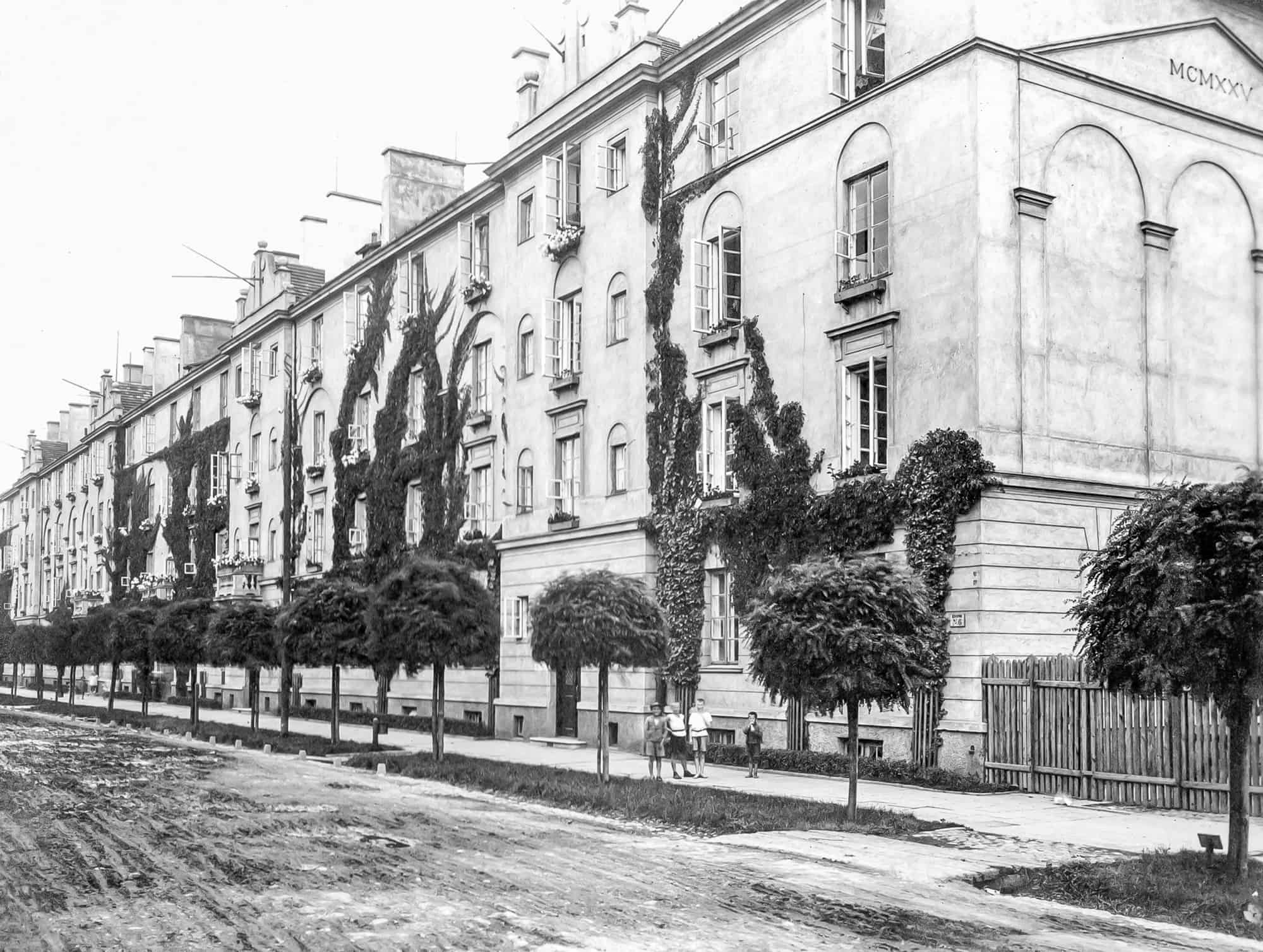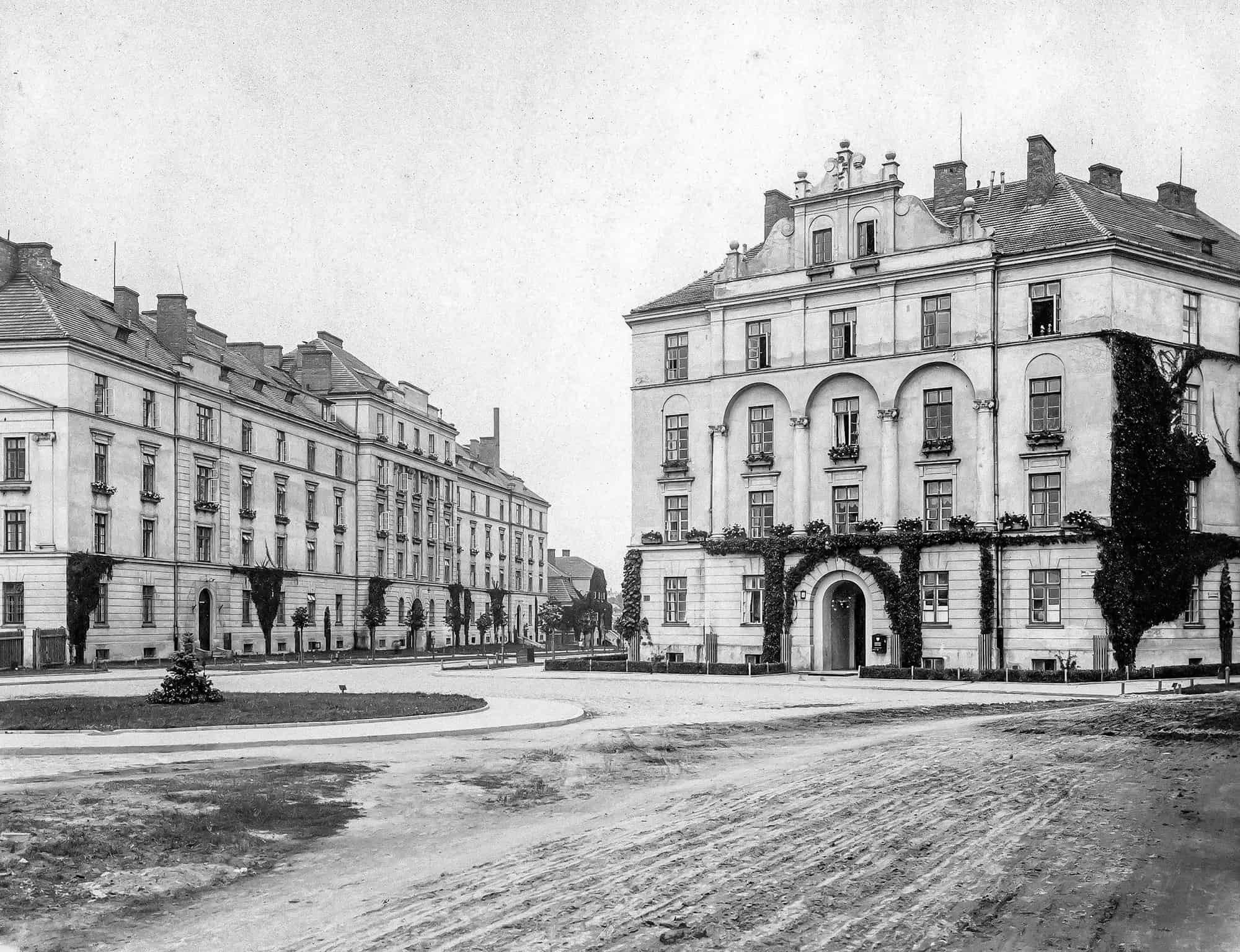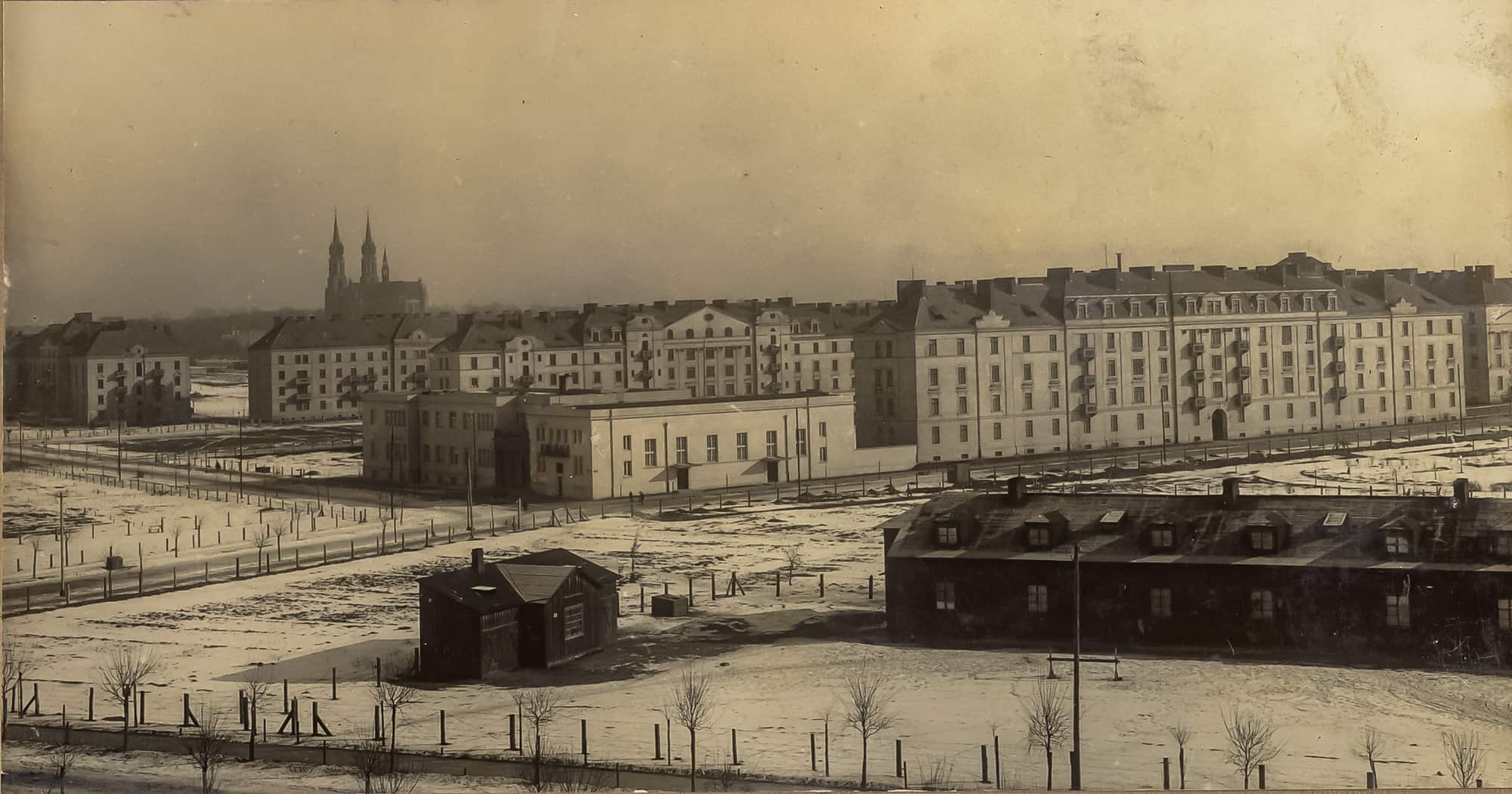‘’PLANTY” HOUSING ESTATE

Listen to the audio guide
The name “Planty” comes from the activity of levelling – “planting” the land intended for development. This is how, among other things, the areas belonging to the former “Mariackie” farm were prepared, where the construction of the factory and the workers’ housing estate of the Weapon Factory was planned. The area stretched along the railroad line between Młodzianowska Street and Długa Street (today’s R. Traugutta Street). The investment planned in this area was realised according to the “Draft of the residential colony plan of the Military Weapons Factory in Radom” of 1924.
In 1925, by virtue of a resolution of the City Council, new streets were delineated and constructed, including G. Narutowicza Street, which ran from Długa Street to Starokrakowska Street (today’s B. Limanowskiego Street). It was a two-lane street with a walking alley in the middle. The second newly laid out street was Szeroka Street (today’s T. Kościuszki Street) connecting the factory with the city centre. It was a 9-meter-wide asphalt roadway, planted on both sides with two rows of lime trees. The third street made entirely by the Weapons Factory was A. Dowkontta Street (today an extension of Ks. J. Poniatowskiego Street), connecting the factory grounds and housing estate with the railroad station. After the streets were laid out, the construction of public buildings along them began.
On the prepared terrain, based on the plan of 1924, supplemented and agreed upon with the city authorities, buildings were erected in three quarters: the first – the workers’ colony, the second – the workers’-clerk’s colony, and the third – the clerks’ colony, where two residential buildings were built, i.e. the foremen’s house and the clerks’ house. The estate has been planned as a stylistically homogenous establishment, with architectural elements of houses referring to the Renaissance and Baroque styles. There are rustications on the first floor, blind arcades and porticoes, lesenes, gables topped with pinnacles with balls, simple cornice and cordon bands. Construction works were carried out by Przedsiębiorstwo Robót Inżynieryjnych i Budowlanych “W. Paszkowski, F. Próchnicki i S-ka” from Warsaw. Between 1925 and 1930, 8 three- and four-story houses were built in the estate, covered with high gable roofs. In total there were 504 apartments with 960 rooms, of a standard never seen before in Radom.
Due to their employment in the factory, the residents of the estate belonged to the better-off part of the city community. The main director of the factory and the technical director earned PLN 1,500 per month, and the department heads earned PLN 1,000. The accountant received a salary of 650 PLN per month, and the salaries of full-time workers, depending on their position and qualifications, ranged from 120 to 260 PLN. At the same time, a teacher’s salary was about 150-180 PLN, and a Polish Army officer’s salary was about 400 PLN. A loaf of bread cost 30 grosz and a kilo of meat 1.50 PLN.
“Planty” as the name of a housing estate built next to the Weapons Factory in Radom, came into circulation only after World War II.





